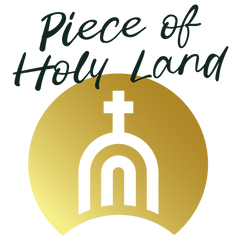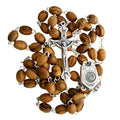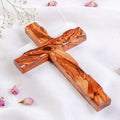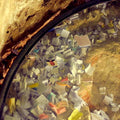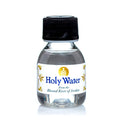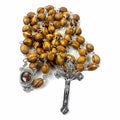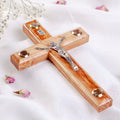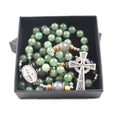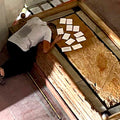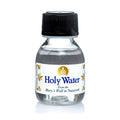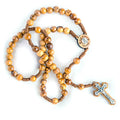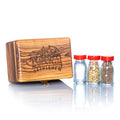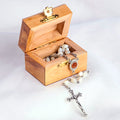Magdala, Mount Tabor & Arbel | Journey Through Galilee's Sacred Sites
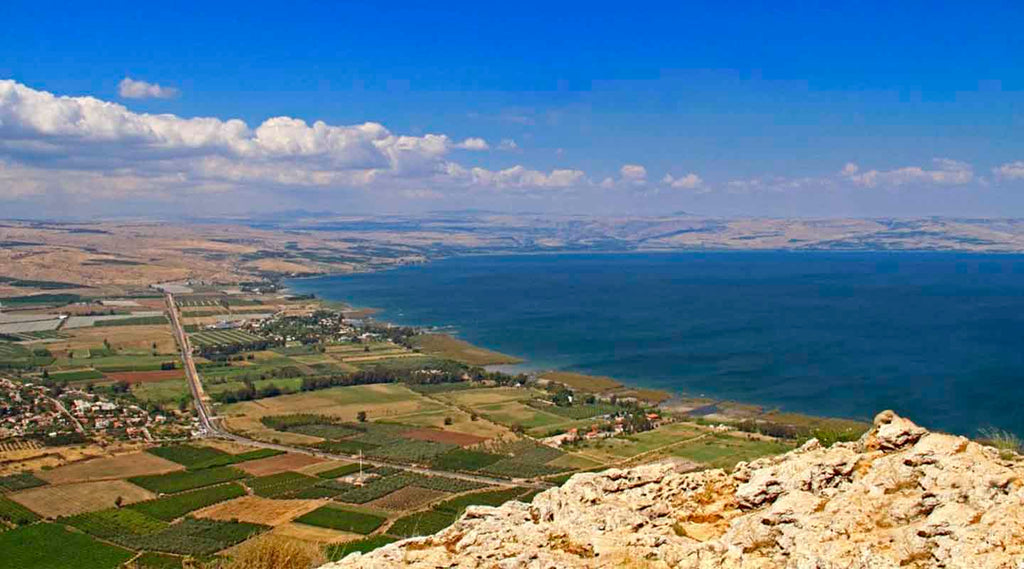
Exploring Magdala, Mount Tabor, Mount Arbel & Kursi in the Christian Narrative
Magdala – Port, Pilgrimage & Mary Magdalene
In the first century, the fishing village of Magdala thrived on the western shore of the Sea of Galilee. Josephus wrote that Magdala had a population of thousands and a fleet of boats, trading in salted fish and textiles. Its Greek name, Taricheae, hints at its fish‑salting industry, and paved streets and markets uncovered in excavations testify to a prosperous town. Magdala’s claim to fame in the Gospel narratives comes through one of its daughters: Mary Magdalene. Jesus freed her from seven demons, and she became one of His most faithful followers, present at the crucifixion and the first witness to the Resurrection. Her hometown reminds us that discipleship can emerge from unexpected places and that women played a prominent role in the earliest Christian community.
Magdala

Archaeologists have revealed a synagogue from the time of Jesus at Magdala. Built of local stone with carved benches and mosaic floors, it preserved frescoes and a distinctive stone depicting a seven‑branched menorah. This rare artefact suggests the artisan had seen the Temple in Jerusalem and carved from memory. Nearby, a second smaller synagogue unearthed in 2021 confirmed that Magdala was a thriving Jewish centre before the First Jewish Revolt. Today, pilgrims can visit the Duc in Altum chapel, a modern church built on the ancient port. Its altar shaped like a fishing boat floats above a pool, and its chapels honour women in the Gospel. Visiting Magdala connects travellers to Mary’s courage and to a community that welcomed both Jewish and early Christian worshippers.
Magdala stone with a seven‑branched menorah

Mount Tabor – The Transfiguration Hill
Rising like a green dome above the Jezreel plain, Mount Tabor stands about 575 metres above sea level. This monadnock commands views in every direction and once guarded the crossroads of ancient trade routes. In the Gospels, it is traditionally identified as the place where Jesus was transfigured before Peter, James and John. During that mysterious event, His face shone like the sun and His garments became radiant white while Moses and Elijah appeared beside Him. The voice of the Father proclaimed, “This is my beloved Son; listen to Him,” and the disciples glimpsed divine glory before descending to the valley.
Mount Tabor

Early Christians revered Mount Tabor as sacred. By the fourth century a Byzantine church stood on its summit, and pilgrims climbing the mountain recited psalms at each bend. Over the centuries Crusaders built fortresses and churches here, and in the nineteenth century a Greek Orthodox monastery joined the existing structures. Today two churches crown the summit: the Catholic Church of the Transfiguration, designed by architect Antonio Barluzzi, and the Greek Orthodox monastery. Both are built on terraces with chapels dedicated to Moses and Elijah, recalling their presence during the Transfiguration. The mountain’s panoramic views invite contemplation, and its oak‑covered slopes have witnessed battles from the time of Deborah and Barak in Judges to modern conflicts. When visiting the mount, many travellers carry with them an Olive Wood Cross or a comfort cross as a tangible reminder of Christ’s victory over death and the light revealed on Tabor.
Mount Arbel – Caves, Cliffs and Refuge
Mount Arbel rises steeply on the western side of the Sea of Galilee, its cliffs plunging dramatically towards the fertile valley below. The summit stands about 181 metres above sea level and more than 380 metres above the plain, offering one of the most breathtaking overlooks in the region. From its ridge one can see the entire northern shore of the lake and the hills of the Golan. Caves carved into its limestone face hide an intriguing past. During the Maccabean period, Jewish rebels and families carved out dwellings in these cliffs, complete with ritual baths and cisterns. Josephus, who commanded Jewish forces during the First Jewish. Roman War, later fortified these caves, turning them into a fortress. The Romans besieged them by lowering soldiers in baskets to fight the defenders, an episode that left a lasting mark on the mountain’s story.
Mount Arbel

Mount Arbel Fortress

At the foot of Mount Arbel are the remains of an ancient village with a synagogue dating from the fourth or fifth century. The synagogue’s basalt walls and carved decorations suggest a vibrant community of worshippers long after the Second Temple was destroyed.
Ancient Arbel Synagogue

Kursi – Healing and Feeding on the Eastern Shore
Across the Sea of Galilee, on the eastern shore, lies Kursi, known in the Gospels as the region of the Gerasenes or Gergesa. Here Jesus encountered two men possessed by demons and cast the spirits into a herd of pigs that rushed down the steep bank into the lake. The delivered men proclaimed their freedom throughout Decapolis, showing that Christ’s compassion reached across ethnic boundaries. A separate miracle took place nearby when Jesus fed four thousand people with seven loaves and a few fish. These stories highlight the generosity of God and the importance of faith even in Gentile territories.
Kursi

Kursi was part of the Greco‑Roman Decapolis, a region of ten cities east of Jewish Galilee. In the fifth century Christians built a large monastery and church complex here, the largest Byzantine monastery in Israel, on the slopes above the lake. Though the Persians damaged it and earthquakes destroyed it, remains of mosaics, chapels and a harbour testify to the devotion of those who remembered Christ’s miracles. Today visitors can walk among the ruins and see the baptismal pool where pilgrims once commemorated Jesus’ mighty works. While on the eastern shore, many believers collect Jordan River Holy Water to bless their homes, connecting their own stories to the waters where Jesus was baptised and to the lake that witnessed His miracles.
Traveling the Galilee Today
Magdala, Mount Tabor, Mount Arbel and Kursi can be visited together on a modern pilgrimage. Many travellers begin in Nazareth, where the Angel Gabriel greeted Mary, then follow the Jesus Trail past Cana to the Sea of Galilee. Walking along the shore they reach Magdala, Capernaum and the Mount of Beatitudes before turning inland to ascend Mount Tabor. A detour takes them to the cliffs of Mount Arbel, while a short drive across the lake brings them to Kursi. Along the way, pilgrims reflect on the Sermon on the Mount, the healing of the paralytic in Capernaum, the calling of the disciples at the Sea of Galilee and the miracle at Cana. To delve deeper into these places, explore our blogs about Nazareth, Capernaum and the Beatitudes, Tabgha & Bethsaida.
Spiritual Lessons and Reflections
These four sites speak of transformation. Magdala offers the witness of Mary Magdalene, whose devotion invites us to follow Christ beyond our comfort zones. Mount Tabor teaches that glimpsing God’s glory sustains us for the valleys and challenges ahead. Mount Arbel reminds us that refuge and perseverance go hand in hand; its caves recall both ancient resistance and the solitude of prayer. Kursi reveals that healing and abundance are gifts offered freely, even to those on the margins. When taken together, these lessons paint a portrait of Christ’s ministry around the Sea of Galilee, moving between Jewish and Gentile villages, teaching on hillsides and in synagogues, calming storms and casting out darkness.
Bringing the Galilee Home
Pilgrims often return from Galilee wanting to carry a piece of its blessing with them. Authentic items crafted by local artisans make beautiful reminders of your journey. A small bottle of Holy Water can bless your home and loved ones. A handmade Olive Wood Cross from Bethlehem connects you to the same trees that surround many of these sites. The Comfort Cross fits softly in the palm during prayer or reflection. A Holy Soil Rosaries, containing soil from the Holy Land, invites you to meditate on the mysteries of Christ while remembering the places where He walked. These items make meaningful gifts for family and friends and sustain a tangible link to the Holy Land long after the journey ends.
Frequently Asked Questions about Magdala, Mount Tabor, Mount Arbel & Kursi
Q: Where is Magdala located and why is it significant?
Magdala lies on the western shore of the Sea of Galilee between Tiberias and Capernaum. It prospered as a first‑century port and is mentioned in Jewish and early Christian texts. Mary Magdalene came from this town, and a synagogue from Jesus’ time unearthed here gives insight into the prayer life of his contemporaries. Pilgrims can visit archaeological remains and the Duc in Altum church, a modern chapel celebrating women in the Gospel.
Q: What happened on Mount Tabor in the Bible?
Mount Tabor is traditionally identified as the site of the Transfiguration (Matthew 17). Jesus took Peter, James and John to a high mountain, where His divine glory was revealed alongside Moses and Elijah. The disciples heard a voice from heaven affirming Jesus as the beloved Son. Today visitors climb the mountain to pray in the churches at the summit and to reflect on this glimpse of divine glory.
Q: Why is Mount Arbel associated with caves and hermits?
Mount Arbel’s cliffs contain natural caves that were enlarged by Jews during the Maccabean and Roman periods. Rebels and families carved out dwellings, ritual baths and hideouts in the rock. Later generations of monks and hermits sought solitude here. Hiking the mountain along the Jesus Trail allows modern pilgrims to see these caves and to experience the serenity and challenge of the landscape.
Q: What miracles are connected with Kursi?
Kursi is associated with two miracles recorded in the Gospels. Jesus healed two demoniacs by casting the demons into a herd of swine that plunged into the lake (Mark 5, Luke 8). Near the same region He fed four thousand people with seven loaves and a few fish (Matthew 15). The ruins of a Byzantine monastery at Kursi commemorate these events and bear witness to early Christian devotion on the eastern shore.
Q: How do these sites relate to other places around the Sea of Galilee?
Magdala, Mount Tabor, Mount Arbel and Kursi are part of a cluster of holy sites around the Sea of Galilee. They complement nearby towns such as Nazareth, Cana, Capernaum and the Mount of Beatitudes. Together, these locations trace Jesus’ public ministry, from calling fishermen and teaching crowds to performing miracles and revealing His glory. Exploring them in sequence offers a deeper understanding of the Gospel narrative.
Q: Can I connect spiritually with these sites from home?
Yes. Even if you cannot travel to Galilee, you can enrich your prayer life with items from the Holy Land. A bottle of Holy Water, an Olive Wood Cross or a Comfort Cross can serve as reminders of the places where Jesus taught and healed. Reading our blogs on Nazareth, Capernaum and other sites will also deepen your connection.
Q: Are there modern churches at these sites?
Yes. Magdala features the Duc in Altum church with a boat‑shaped altar. Mount Tabor is crowned by the Catholic Church of the Transfiguration and a Greek Orthodox monastery. Kursi includes the ruins of a Byzantine monastery and modern chapels. At Mount Arbel, although there is no active church on the summit, nearby villages maintain synagogues and churches that welcome visitors.
Q: What products from the Holy Land can commemorate a visit?
Popular items include Holy Water from River Jordan or Mary's Well in Nazareth, handcrafted olive wood crosses and Holy Soil Rosaries. These products support Christian artisans in Israel and serve as enduring reminders of your pilgrimage.
SHARE:

